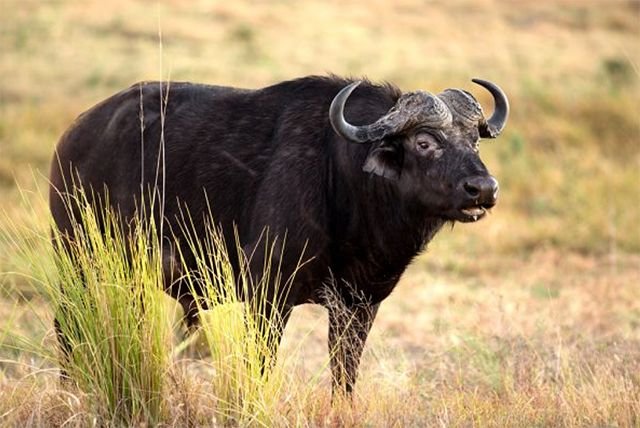African Wild Cat
The domestic tabby, which has grey spots and dark stripes, looks a lot like the African wild cat (Felis lybica), and the two species have been able to get along well enough to breed. Many different types of savanna can be found in Uganda, and this animal calls them home.

The African wildcat (Felis lybica) is a tiny wildcat species, originally from Africa, West and Central Asia, and even as far east as Rajasthan, India, and Xinjiang, China. The IUCN Red List of Threatened Species has designated it as "Least Concern" for the year 2022.
The African wildcat has fur that is sandy grey in colour, with hints of yellow or red; the underbelly and throat, however, are virtually white. Small, tufty, and ranging in colour from red to grey, with long, pale yellow hairs around the pinna, the ears are distinctive. Dark ochre to black stripes wrap around the face, with two running horizontally on each cheek from the outer corner of the eye to the jaw, a smaller one running from the inner corner of the eye to the rhinarium, and four to six running across the throat. Stripes run along the back legs, and two dark rings encircle the forelegs. The back is marked with a dark stripe, while the sides are lighter. The side stripes often blur into spots, and they're a pale, vertical colour. The tip of its black tail bears two or three white rings. The soles of its feet are a very dark brown to black.
African wild cats are said to be the ancestors of today's domestic cats; the Egyptians domesticated these cats more than 4,500 years ago to reduce cat populations that were causing damage to their grain stores.
African Wild Cat behaviour.
It is at night when African wildcats go hunting. Their acute hearing allows them to pinpoint the exact location of their prey. They creep up on their prey by slowly moving forward while hiding in nearby plants.
The African wildcat will lift its hair when threatened to make itself look bigger and more threatening. It sleeps most of the day in the bushes and only comes out when it's cloudy in the afternoon. Up to three female territories may overlap with a male's.
African Wild Cat Reproduction.
The gestation period of a female lasts between 56 and 60 days. She usually has one, two, or three kittens in Botswana during the hot and rainy season. There have been reports of litter sizes as large as five kittens. Her birthing den could be a burrow, a hollow tree, or thick grass. After 10–14 days, the kittens' eyes open, and by one month, they can move around freely. They begin learning basic hunting skills from their mother at around the three-month mark. They are on their own after about six months, having left the family nest.
African Wild Cat Diet.
There is a severe lack of water consumption among them. The majority of their prey consists of rodents, birds, reptiles, and insects.
Foxes, wolves, other large cats, and large birds of prey like owls, eagles, and hawks are their principal natural enemies. However, when threatened, African wild cats can become quite aggressive.
What's Your Reaction?
 Like
0
Like
0
 Dislike
0
Dislike
0
 Love
0
Love
0
 Funny
0
Funny
0
 Angry
0
Angry
0
 Sad
0
Sad
0
 Wow
0
Wow
0













































































